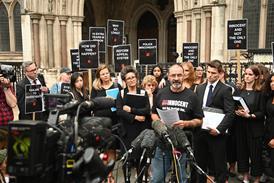A secondary victim is someone who, when witnessing an accident, suffers injury consequential upon the injury, or fear of injury, to a primary victim. Because of the potential for multiple claims for damages arising out of a single accident, the courts have been anxious to restrict the numbers of claimants by the imposition of the ‘arbitrary’ (Lord Hoffmann) control tests which are hurdles to be cleared to establish the necessary proximity of relationship between the claimant and the primary victim.
There have been five occasions when the claims of secondary victims arising out of ‘nervous shock’ have been before the House of Lords. The most recent of which was Frost v The Chief Constable of South Yorkshire which resulted from the Hillsborough tragedy. On that occasion the law lords removed any special rights of employees or rescuers to avoid the control mechanisms.
In short, the additional hurdles to mere foreseeability of harm are that the claimant must:
- have a relationship of love and affection with the primary victim;
- come across the ‘immediate aftermath’ of the event;
- have direct perception of the harm to the primary victim; and
- be of reasonable fortitude.
In Taylor v A Novo (UK) Ltd [2013] EWCA Civ 194 (Lord Dyson MR, Moore-Bick LJ and Kitchin LJ), the claimant’s mother was injured at her workplace when, through the negligence of a fellow employee, a stack of racking boards fell on top of her. She had apparently made a good recovery, but approximately three weeks later she, suddenly and unexpectedly, collapsed and died at home. While her daughter did not witness the accident, she did witness her mother’s death. She suffered post-traumatic stress disorder as a consequence. She pursued a claim for damages against her mother’s former employer.
The master of the rolls gave the lead judgment in a unanimous decision of the appeal court, reciting the settled law from the demonstrably too wide definition of ‘reasonable foreseeability’ as set out in Donoghue v Stevenson [1932] AC562 to the more restrictive ‘neighbour’ test, introducing the concept of proximity in Alcock v Chief Constable of South Yorkshire Police [1992] 1 AC 310. He concluded, by reference to Lord Hoffmann’s comment on the control mechanisms, that they were ‘more or less arbitrary conditions which a plaintiff has to satisfy and which were intended to keep liability within what was regarded as acceptable bounds’.
Lord Dyson, while accepting that the categorisation of those who can be included as primary and secondary victims is not closed, felt that the boundaries of proximity should be drawn as far as is possible to ‘reflect what the ordinary, reasonable person would regard as acceptable’. His conclusion was that it would be incomprehensible to allow Miss Taylor to recover for witnessing the death of her mother three weeks after an accident, when if Mrs Taylor had died at the time of the accident but Miss Taylor did not come across the immediate aftermath, she would not recover damages. This would stretch the categorisation of secondary victim too far, and his lordship raised the issue of when would it end, by asking if Mrs Taylor had survived for some years following the accident but then, on proof of causation, had died as a result of it, would her daughter have been able to recover if she had then witnessed the death?
This area remains vexed. The ‘immediate aftermath’ is assessed on the particular facts of the case. There is a degree of flexibility built into the assessment of the concept, as evidenced in North Glamorgan NHS Trust v Walters [2002] EWCA Civ 1792, when the court found that the facts of the case created a ‘seamless tale’ with ‘an obvious beginning and an equally obvious end… played out over a period of 36 hours’. In the instant case, the sustaining of the injuries by Mrs Taylor and her subsequent death were distinct events.
Simon Allen is practice group leader, personal injury, at Slater & Gordon


























No comments yet